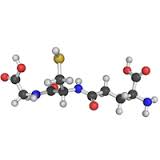 In this day and age there are far too many of them. They are responsible for the deaths of untold numbers of people. Left unchecked they will continue to maim and kill. And you can do something about it. They must be neutralized and eliminated!
In this day and age there are far too many of them. They are responsible for the deaths of untold numbers of people. Left unchecked they will continue to maim and kill. And you can do something about it. They must be neutralized and eliminated!
I’m not talking about those religious extremist nut-cases that figure they have the god-given right to violate the basic principles of human rights and their own religious teachings to impose their warped views on the rest of the world. What I am talking about are the radicals that are appearing in ever increasing numbers in the cells of your body. They are the cause of most chronic disease in the world. And it is possible to do something about it.
In order to undertake effective action, however, it would be useful to understand the general mechanics of how they get created and how they can be dealt with.
How are Free Radicals Created?
Let’s start with something we all understand. In order to live you need to breathe. The reason for that is that you need oxygen to survive; and breathing allows you to extract oxygen from the air and pass it to the red blood cells in your body. Flowing through your blood vessels, your red blood cells deliver oxygen to all of the living cells throughout your body.
There is an on-demand system in operation here. The more work a cell has to do, the more oxygen it will try to extract from the blood as it flows past. Each of your cells uses oxygen as a key element of the process of doing work. You can verify this yourself. Get on an exercise bike, set a reasonable resistance and peddle as fast as you can. What happens to your heart rate and respiration rate? They both go up as your body tries to increase the transfer of oxygen from the air and deliver it more quickly to the muscle cells that are demanding it to fuel the work they are doing.
In chemistry, a free radical is an atom, molecule, or ion that has unpaired valence electrons – it has a negative charge. With some exceptions, these unpaired electrons make free radicals highly chemically reactive towards other substances. Some important oxygen-centered free radicals include peroxide, the superoxide radical and the hydroxyl radical. They are produced from molecular oxygen under reducing conditions.
So, molecular oxygen is delivered to the cell by the bloodstream. The chemical reaction that uses (reduces) the oxygen to do its work results in a negatively charged oxygen-based free radical (like a hydroxyl radical).
Normal cell activity produces free radicals.
Unfortunately, we live in a world that has huge amounts of environmental toxins – in the air we breathe, in the food we eat and in the water we drink. The cells try to deal with these foreign toxins when they enter the cell. Dealing with toxins represents quite a lot of work for the cell, with the cell producing extensive amounts of free radicals. This is not good a good thing.
How do Free Radicals Cause Damage?
Because they are highly reactive (due to the unbalanced number of electrons), these same free radicals can participate in unwanted side reactions with various other molecules that are part of the cell, resulting in cell damage. They do this by stealing an electron from a nearby molecule in the cell, disabling that molecule’s function.
This is not good. Excessive amounts of these free radicals can lead to cell injury and death, which may contribute to many diseases. (Refer to Wikipedia article on Radical chemistry.) Fortunately, that is not the end of the story.
How do Antioxidants Neutralize Free Radicals?
According to an article by the American HealthCare Foundation:
Antioxidants are stable molecules that have electrons to spare. When antioxidants come in contact with free-radical molecules – they hand over their electrons and stop the degenerative chain reaction of free-radical oxidation.
Antioxidant molecules are able to give up an electron and subsequently become electrically stable.
Some antioxidants are produced naturally in our cells. Other antioxidants can be be found in the food we eat. The body’s primary antioxidant is Glutathione (GSH) which is produced internally by the cells. Some foods high in antioxidants are those containing Vitamin C, Vitamin E, and beta-carotene (which converts to Vitamin A in the body).
However, most people don’t have enough antioxidants to deal with the volume of free radicals being produced.
How can you Avoid Free Radical Damage?
The key to maintaining good cellular health is to ensure that the cell has within it an adequate supply of antioxidants to deal with the free radicals produced as the cell creates energy to do its work.
In part you can achieve this by ingesting foods that are high in dietary antioxidants. However, perhaps the most effective approach is to increase your body’s intracellular glutathione levels (glutathione produced in the cell, by the cell). (Refer to The Body’s Miracle Molecule.)
We live in an ever increasingly toxic world. Our cells have to work overtime to try to deal with the toxins they are exposed to. So we need even more antioxidants than our ancestors needed just to maintain a reasonable balance. You would have to consume huge amounts of antioxidant rich foods to deal with your body’s demand. In today’s toxic environment, that is not enough.
High quality dietary supplements may be the only effective way to maintain adequately high antioxidant levels. And one of the best approaches is a dietary supplement that promotes the body’s own production of glutathione. Intracellular glutathione is many times more effective as an antioxidant than all of the other antioxidants you may ingest.
Get rid of the radicals! If all the cells of your body are healthy, you will be healthy.
Reference: “Role of Oxidative Stress,” American HealthCare Foundation
#freeradical #antioxidant #glutathione

This was excellent and clearly stated information. I have been acutely aware of this for years as we need this understanding in order to realize optimum health. Thank you
Thank you Carol. I appreciate the feedback.
~~ John
Very informative Thanks for publishing it.
Thanks, Don. Please consider subscribing to get notified about future posts.
~~ John
John,
Very nicely done. Very well written. Very informative. Thanks for sharing.
Thank you, Jerry. Please consider taking a look at my other articles in the “Health Science” category. Perhaps we could chat sometime.
~~ John